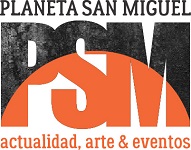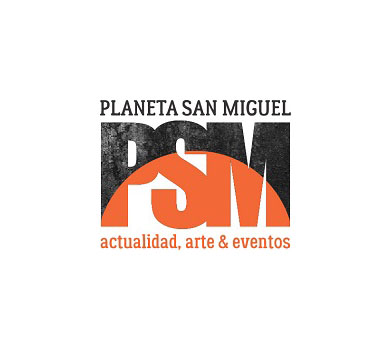Leonardo Díaz
There is no doubt that San Miguel de Allende has carried a special stigma since its origin: a prominent place in economic life in colonial times, a historical protagonist in the war for independence, and a recurring space for artistic spirits of all times and latitudes. Let us remember the presence of intellectuals and humanists of the stature of Stirling Dickinson, Cossío del Pomar, and David Alfaro Siqueiros, who would erect a cultural venue for the arts, the Nigromante Cultural Center, in which we can still enjoy the pictorial work of the master muralist. Or the Allende Cultural Institute, formerly the University of Fine Arts, founded in 1937 in an old hacienda dating back to 1740, where — years later — master craftsmen from the surrounding communities and former combatants of the American armed forces were simultaneously accommodated, taking advantage of the G.I. Social Reintegration Program Bill: a program designed to reintegrate war veterans into the social fabric through the arts. Nowadays we can also enjoy spaces that contribute to this artistic setting that is all around our town: El Sindicato Centro Cultural and the Aurora Factory, to mention a couple more examples.
Art is, therefore, inevitably and indisputably found in our city, in its corners, in its everydayness, and in our conversations. However, in meetings with friends and family, it is often stipulated that “we shouldn´t talk about religion, politics, and football”, that we shouldn’t discuss art either. In my experience, I have witnessed intense discussions full of arrogance and vitriol about what is going on with the work of artists inside and outside our own town: in bars, restaurants, galleries, and public squares they continue to talk about Zona MACO, Art Basel, Ai Wei Wei, the Aurora Factory, Instituto Allende, the Nigromante, etc., leaving none unscathed. Friendships have ended after discussing this very sensitive topic. That´s how intense it is.
It seems to me that art is experienced in two ways in San Miguel: on the one hand, some commune with the ghosts -and their heirs- of those who built the bohemian myth by founding academies, workshops… smearing liters of paint and hours of talent on canvas and walls; and on the other hand, there are those who jump on the replicating phenomenon, like the kid who opens up a gallery with daddy´s money, undecided as to whether his is a decoration or an artistic venue. If the tourist notices it, then it´s all good. But yes, there is also Contemporary Art here.
In the bar or the street, when you run into a fellow painter (it is very easy to meet painters in this small city) who has some time to spare, he will surely talk about art. Frankly, even personally, I too like to discuss the topic of “Contemporary Art”, a matter that seems to go beyond the lines that define art as such: whether it’s the visual arts, or trends and traditions, or just a set of aesthetic disciplines that are little understood by the majority, and this includes new technologies, performance, installation pieces, concepts as technical tools for the production of works of art, and more recently, even the so-called NFTs (Non-Fungible Token).
The definition of Contemporary Art is that which is made or produced in our time, now. But in the spirit of our current culture (millennial, hipster, cool), it is also something more than that: it is a construct that looks like some kind of entity in constant evolution, which makes it difficult to ascertain what a new aesthetic is. Perhaps it´s just a “momentary trend.” Everything is so quick. There is so much of everything, endless stimuli. Current products that are no longer physical, existing solely on the Internet. Someone said that “now, everything is art.” It seems that there is an overproduction of aesthetic objects that causes us to get lost in the tide of information, fashion, and capital. I sense that we artists have one of two options left: one is to “pretend that we understand the moment” and we generate quickly-forgettable manufactured objects, covered with a confusing and cheap kind of rhetoric, self-serving and pedantic; nothing but a personality cult: we, the artists, decide what art is; social networks are a library for the self. Another option is to produce according to the mandates of sense, taste, and will, of love for and commitment to what we create from our existential, social, and spiritual concerns, thus expecting only the continuity of our work: the rest is the privilege of finding ourselves through the arts.
Here, in San Miguel, I have observed these two aforementioned positions. In both cases, I know artists who have achieved great success through their work, colleagues who exhibit their best pieces in prestigious galleries and museums in Mexico and abroad. For others like myself, we continue to make our way. Making a living as an artist is difficult in itself; it is a rough path in which collectors are scarce and the art scene is undervalued. And, needless to say, when the socio-economic conditions for some of us have been harsh from the beginning, the going is even rougher: the story of meritocracy poisons the well. Rich artists, impoverished artists, admired artists, struggling artists, part-time artists, pseudo artists, tourist artists… they come in all colors and shapes. I won’t be lying when I say that, after so much history, so many galleries, texts, photographs, installation pieces, plays, concerts, paint smeared on fabric and walls, wire, bronze and carved stone, there is no single creator who can represent all the ways to be an artist. It is strange to be lucky enough to live in this small city of ours and witness such a phenomenon.
Thus, our artistic San Miguel is torn between a bohemian, romantic, and dream-like past, and the current pragmatic, competitive, individualistic, and chic present. And by the way, where are the artists from the margins, from the periphery, from the neighborhoods that are not downtown, the rappers, graffiti artists, poets, tattoo artists, illustrators, and breakdancers? There are those that are invisible but that have so much to offer, and please, let’s not be condescending: to all of you “good-natured altruists” who, without understanding or empathizing, go around “wanting to help”, we don´t need your help. So much time, so much history, so much future and we still don´t have a Museum of Contemporary Art in San Miguel, even though this is the “most beautiful town in the world”. A Museum is urgently needed to bring us together. The ingredients are there, the table is set, the talent is present, the resources are not lacking. Let’s look each other in the eye, head on, and get together as a family to prepare something even more impressive than what has already been.
Opinions:
There is undoubtedly a lot of talent among the artists in SMA. However, the dynamics of the town greatly influence us, so that most of the time the results are art pieces with commercial rather than aesthetic, purposeful, or critical value. In terms of the theater, I congratulate the independent groups that remain steadfast in their work despite the few financial resources they have. I recognize the work of visual artists who have found their own style and have opened a space that is nothing like the various galleries that lack any kind of identity or sense.
SMA is a space for conviviality, convergence, and mixing. These social dynamics are reflected in the richness and diversity of artistic productions in our town.
— Cristina Solís, Director of El Sindicato Centro Cultural Comunitario.
In SMA there are very diverse forms of art, ranging from the most commercial and ordinary, to the avant-garde. There is art that is produced only to be sold, for purely decorative purposes, but there is also art that is produced in another way, that takes care of the modes of production, where there is a collectivity behind it, and that has different underlying meaning; art that merges with technology. There is a wide variety of art forms being produced in San Miguel de Allende.
— Mónica Hoth, playwright and member of the FONCA National System of Art Creators
My general opinion about the arts in San Miguel is that they are broad and diverse in quality and style. Not only the visual arts, also music, theater, dance, and of course, multilingual literary art.
—Víctor Sahuatoba, Director of the Festival Literario y Feria del Libro de San Miguel de Allende.















